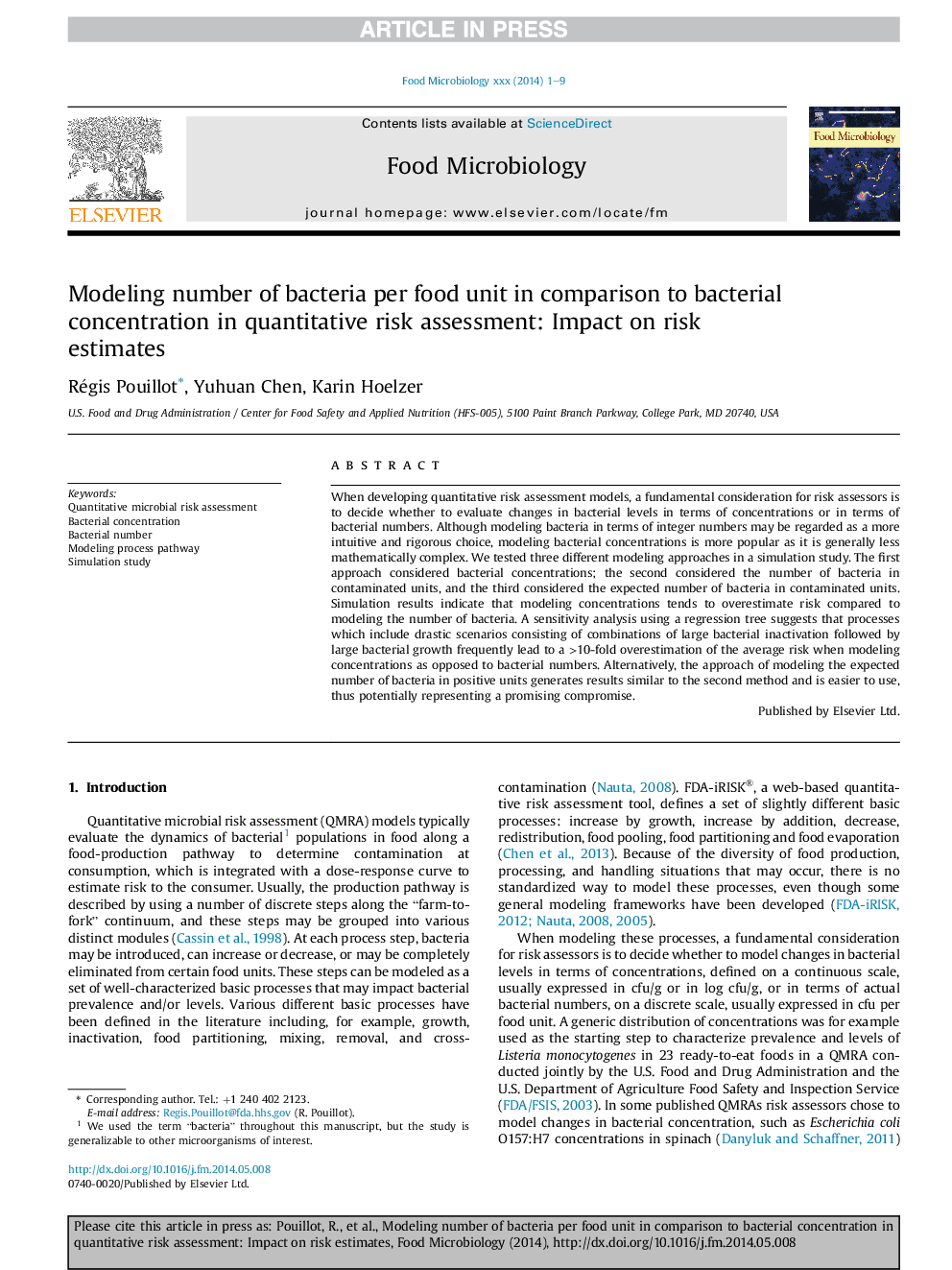| Article ID | Journal | Published Year | Pages | File Type |
|---|---|---|---|---|
| 6288638 | Food Microbiology | 2015 | 9 Pages |
Abstract
When developing quantitative risk assessment models, a fundamental consideration for risk assessors is to decide whether to evaluate changes in bacterial levels in terms of concentrations or in terms of bacterial numbers. Although modeling bacteria in terms of integer numbers may be regarded as a more intuitive and rigorous choice, modeling bacterial concentrations is more popular as it is generally less mathematically complex. We tested three different modeling approaches in a simulation study. The first approach considered bacterial concentrations; the second considered the number of bacteria in contaminated units, and the third considered the expected number of bacteria in contaminated units. Simulation results indicate that modeling concentrations tends to overestimate risk compared to modeling the number of bacteria. A sensitivity analysis using a regression tree suggests that processes which include drastic scenarios consisting of combinations of large bacterial inactivation followed by large bacterial growth frequently lead to a >10-fold overestimation of the average risk when modeling concentrations as opposed to bacterial numbers. Alternatively, the approach of modeling the expected number of bacteria in positive units generates results similar to the second method and is easier to use, thus potentially representing a promising compromise.
Related Topics
Life Sciences
Agricultural and Biological Sciences
Food Science
Authors
Régis Pouillot, Yuhuan Chen, Karin Hoelzer,
